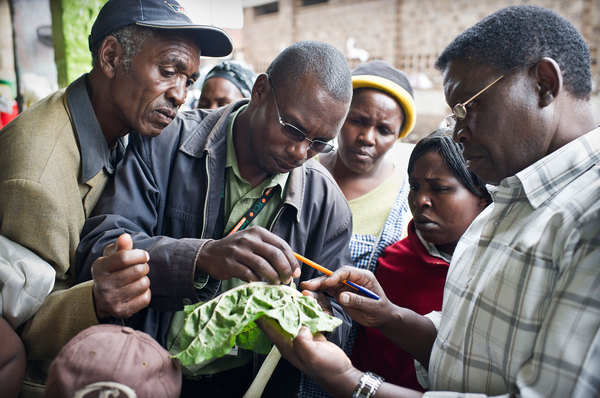Why African farmers should balance pesticides with other control methods
By Esther Ndumi Ngumbi. Reblogged from The Conversation. Insect pests cause almost half of the crop losses in Africa. If the continent is to feed its growing population, farmers must find ways to control them. Pests account for high losses in other developing regions too. For smallholder farmers in particular, pest management needs to be affordable, safe…
How does communication and its technical content shape farmer responses to plant clinic advice?
A recent study led by CABI and published in International Journal of Agricultural Sustainability, explores how communication and its technical content shape farmers’ response to advice delivered at plant clinics. How willing were farmers to accept or reject the technologies recommended at plant clinic consultations? And what were the reasons? The research was carried out…
NextGen Cassava Improving Food Security in Sub-Saharan Africa
The Bill and Melinda Gates Foundation has paired with the UK Government to award the Next Generation (NextGen) Cassava Breeding Project $35 million with the aim of promoting the growth of cassava crops and to improve food security in Sub-Saharan Africa.
New coalition puts knowledge and skills into the hands of those who need it
CABI has joined forces with the ISEAL Integrated Pest Management (IPM) Coalition in the fight to implement better, less chemical-dependent, ways for farmers to manage agricultural pests and diseases that account for around 40% of lost crops worldwide. By linking with the Plantwise Knowledge Bank, the coalition aims to share knowledge on sustainable pest management…
Plantwise trials image recognition app Plantix in India
Plantwise and the German-based company PEAT (Progressive Environmental & Agricultural Technologies) are about to conduct an 18-month pilot study to assess the benefits of PEAT’s smartphone app Plantix, which can help to diagnose plant pests, diseases and nutrient deficiencies in the field.
Update: New Pest & Disease Records (5 Mar 18)
We’ve selected a few of the latest new geographic, host and species records for plant pests and diseases from CAB Abstracts. Records this fortnight include the first report of grapevine syrah virus-1 in China, the first report of Cocksfoot mottle virus infecting wheat in Ohio, USA and the first report of Tobacco mosaic virus infecting sesame…
Women farmers in Ekxang Village equipped with pest-smart practices against pest and disease outbreaks
by Sathis Sri Thanarajoo. Reblogged from CCAFS: CGIAR News blog. The Pest Smart program aims to enable farmers, particularly women and marginalized groups, to become resilient against potential pests and diseases outbreaks due to climate change. The Pest Smart program promotes the adoption of climate-smart practices that manage pests and diseases, and empowers women to be actively…
Researchers Learn from Plant Viruses to Protect Crops
By Claire Asher. Reblogged from The Scientist magazine. In 2011, Noah Phiri was working with local farmers in Kenya to combat the fungal pathogen that causes coffee leaf rust when another virulent plant disease began wiping out maize in the country’s southwest corner. Infected plants developed pale streaks on their leaves, then wilted and died. Some farmers…
Agroforestry: Mitigating Cocoa Swollen Shoot Virus Disease in Ghana
Crop diseases are an ever-increasing worldwide threat and estimated to be the cause of the 20-40% decrease in global agricultural productivity. With this boom in plant diseases affecting agricultural practices, there is therefore also an increased demand for research and the implementation of disease control and management schemes.
Update: New Pest & Disease Records (7 Feb 18)
We’ve selected a few of the latest new geographic, host and species records for plant pests and diseases from CAB Abstracts. Records this fortnight include the first report of grapevine yellow speckle viroids in Nigeria, the first report of tomato ringspot virus (Secoviridae) in a vineyard in Ohio, USA and the first report of pepper vein…




